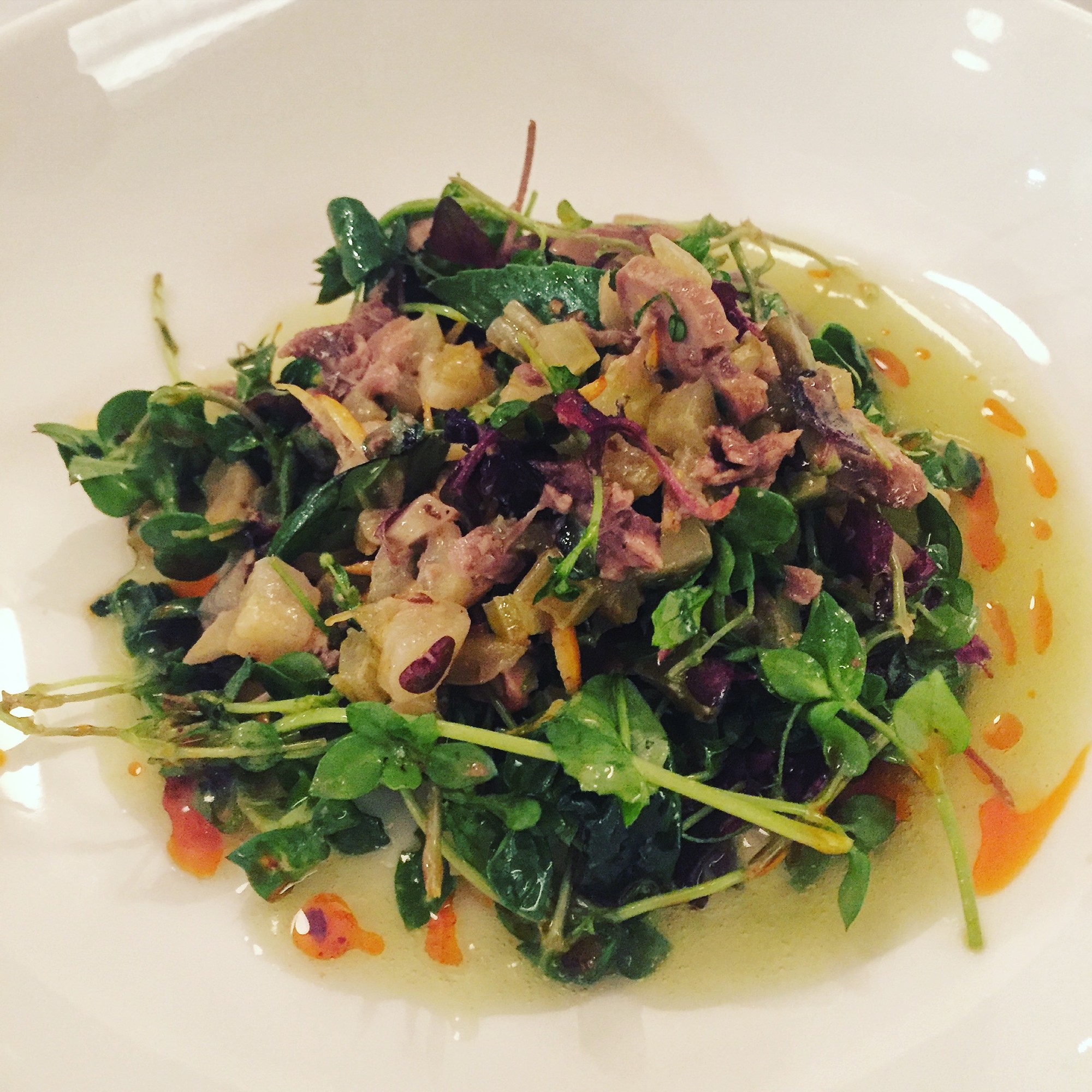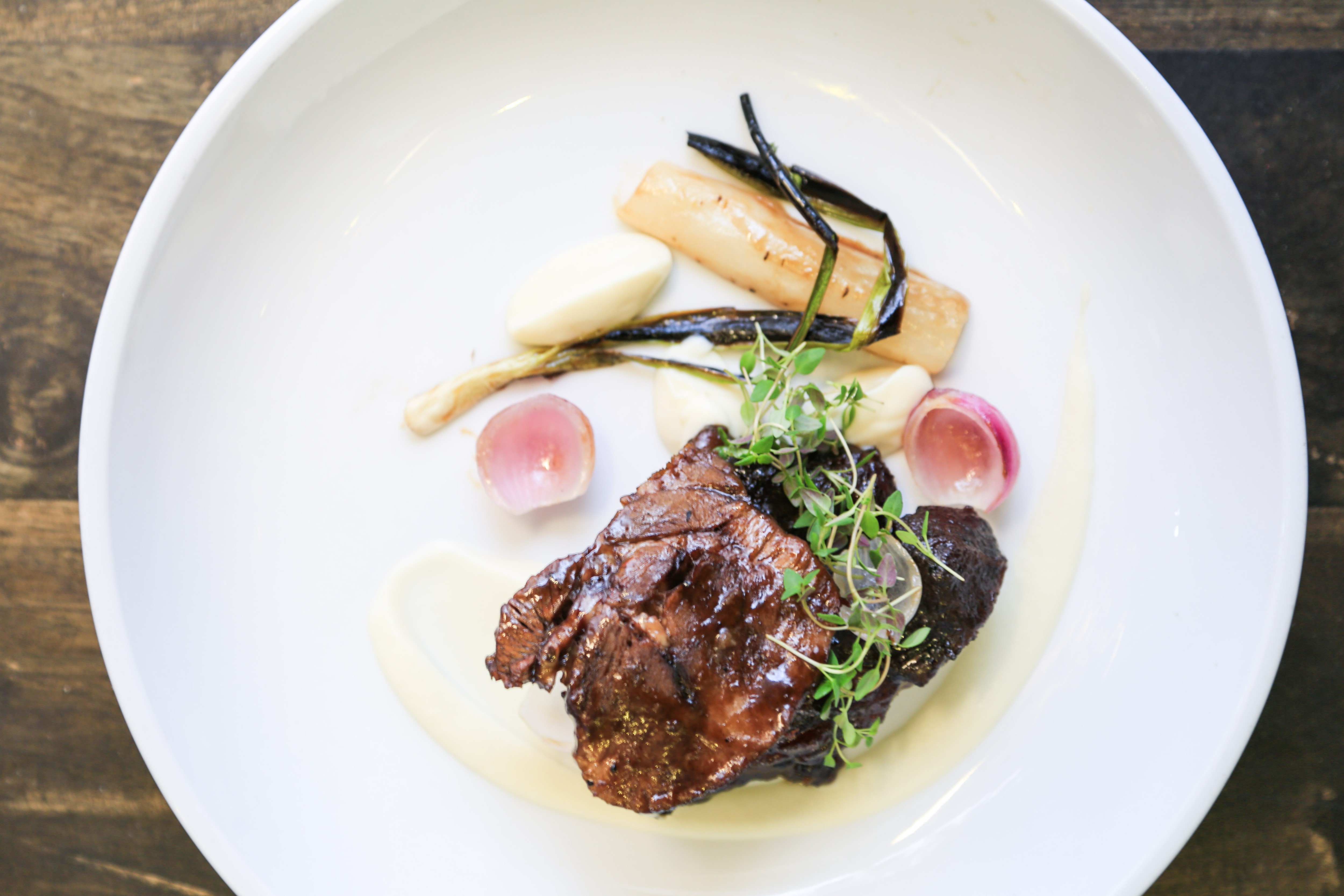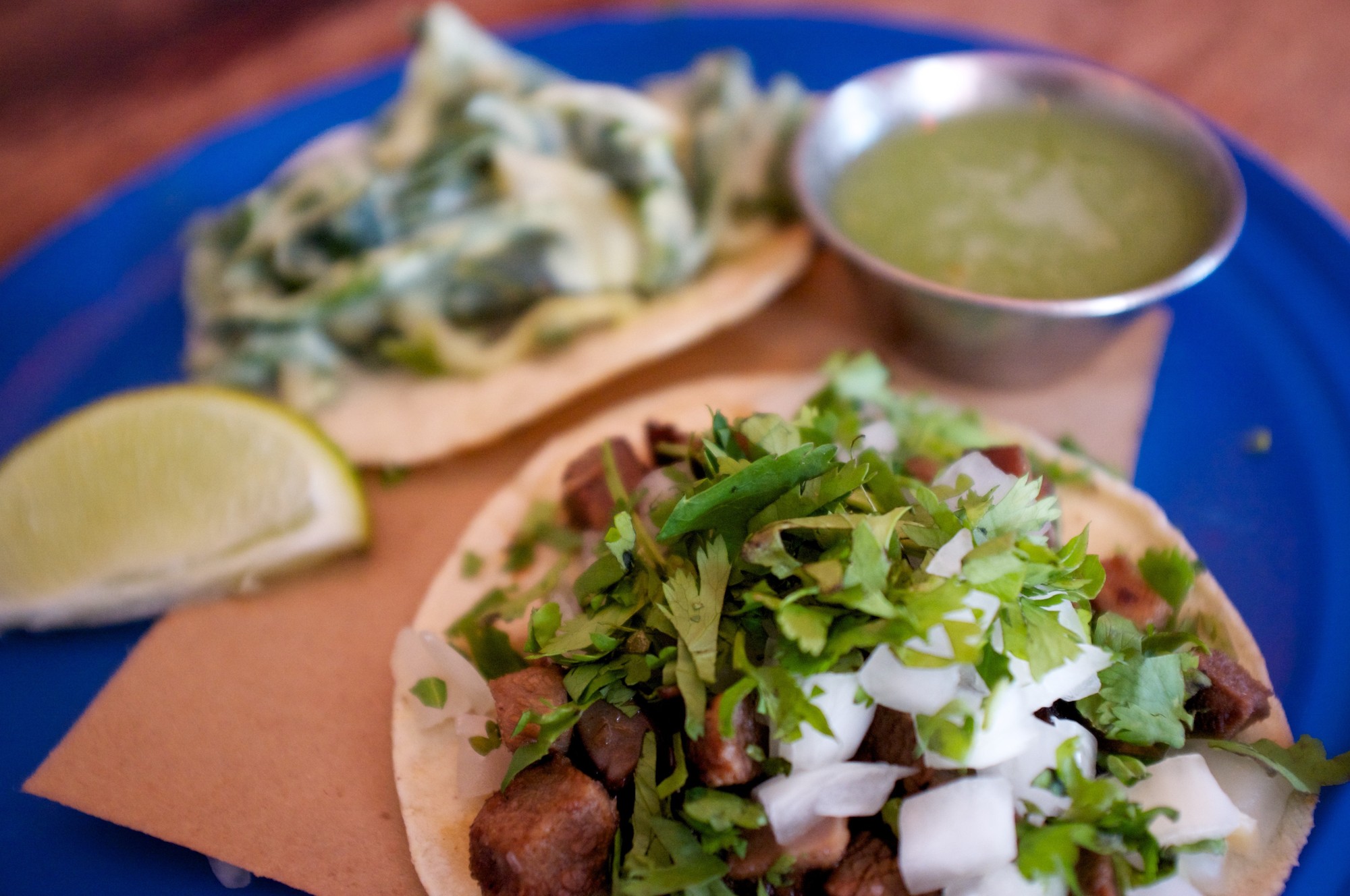By Amanda Gabriele
You’re not actually eating the taste buds when you bite into a piece of tongue: those are removed when the organ is peeled, an integral part of the cleaning process that rids it of a tough outer layer of skin and exposes what will be a tender, flavorful piece of meat. While the notion of ingesting this cut of meat is strange to some, the use of tongue in cuisine goes back to the same history that’s rooted in cooking any kind of organ meat: to use a whole animal without wasting anything.
Like any good peasant food, it’s about getting bang for your buck, and the culinary world is better for it. In the spirit of cutting down on food waste and also of eating more adventurously, we set off on a mission to find the best tongue dishes in New York City.
The Finch , Clinton Hill
Housed in a newly-renovated 120-year-old brownstone on a tree-lined street in Brooklyn, The Finch is the kind of place where you’d expect tradition and innovation to collide. Chef and owner Gabe McMackin has 20 years of cooking and catering experience with restaurants like Blue Hill at Stone Barns, Gramercy Tavern and Roberta’s on his resume, and as you’d expect, The Finch’s American menu changes with the seasons. But we, of course, were most interested in the shaved lamb’s tongue with fennel, green olives, orange and chili.
“I think I first got excited about cooking offal and then tongues when I was doing the pig or lamb salad at Blue Hill at Stone Barns,” McMackin said. “Brains, kidneys, ears, hearts and snouts were all such wonderful textures and flavors that you could experience in different ways with a few beautiful greens for texture.”
Just like everything else on The Finch’s menu, every ingredient in the lambs tongue dish is well thought-out and perfectly prepared, made to complement and enhance the main component. They confit the tongues in lamb fat with bay leaves, sliced lemons, black pepper, chili, fennel and garlic for three hours, then slice them very thinly across the grain and heat them in the oven with a relish of diced fennel, celery, sliced castelvetrano olives, orange supremes and crushed chilis.
The meat is then mixed with what McMackin describes as “bright green things” – right now chickweed, watercress, pea shoots, celery leaves and basil – dressed lightly with lemon vinaigrette, topped with celery broth and Aleppo chili oil and sent out to the next adventurous diner who orders one of these beauties.
 The lamb tongue at The Finch is brightened up by green veggies. Photo by Amanda Gabriele
The lamb tongue at The Finch is brightened up by green veggies. Photo by Amanda Gabriele
Kat & Theo , Flatiron
Named after owner Andreas Typaldos’ parents Katerina and Theodosios, reflecting his journey from the Greek island of Lefkada to America, Kat & Theo’s American menu is flecked with Mediterranean flavors. And it doesn’t hurt that executive chef and born-and-bred New Yorker Paras Shah was exposed to cuisines from all over the world growing up. His resume would impress just about anyone with a hearty appetite, having worked for Thomas Keller at Per Se, Momofuku Noodle Bar and at Ferran Adrià’s world-famous El Bulli in Roses, Spain.
Presented as a main dish, his beef tongue is accompanied by cheeks, braised salsify and cauliflower.
“We had a summer tongue dish on an early menu at Kat & Theo, and as big fans of the often overlooked cut of meat, we’re excited to be bringing it back with a new spin,” Paras said. “Having grown up here, I’m always a fan of slowly-cooked products, and I’ve always enjoyed a tongue sandwich in any good Jewish deli.”
The tongue at Kat & Theo is simple and straightforward, prepared using mirepoix, a couple heads of garlic, thyme, rosemary and wine. It’s slow-cooked at a low temperature and a good amount of liquid to get it just right, so the meat becomes melt-in-your-mouth tender rather than tough and rubbery. Growing up, Paras admits certain kinds of innards made him squeamish, until years of cooking taught him how to finesse and elevate the ingredients to make them some of the most delicious parts of the animal.
“In the majority of supermarkets, meat comes cellophane-wrapped in Styrofoam containers and does not resemble the animal from which it came,” Paras said. “That lack of connection with our food’s original sources has created a dining culture that makes folks squeamish about eating innards.”
“It’s sort of primal, carnal, elemental and honorable when one eats the offal,” he adds. “It honors the animal that has sacrificed its life so we can eat, and it honors it entirely.”
 The tongue dish at Kat & Theo is straightforward yet beautiful. Photo by Katie Burton
The tongue dish at Kat & Theo is straightforward yet beautiful. Photo by Katie Burton
La Superior , Williamsburg
This OG spot on Williamsburg’s South Side has been there quite some time, before the shiny high-rises and national chains started moving into the neighborhood. When Iris Avelar and her business partner Felipe Mendez opened the spot more than eight years ago, they were determined to create an authentic Mexican taqueria. And as West Coast friends will tell you, they did a damn good job of it.
The menu, created by Mendez, is stacked with the types of dishes you won’t find elsewhere: pork brain quesadillas, a pig’s feet tostada and traditional gorditas (pockets of crisp cornmeal stuffed with goodies like chorizo, potato, cheese, lettuce and Mexican cream) are listed alongside dishes for the less adventurous. But we’re here for the lengua tacos, filled with tender, crispy beef tongue and dressed simply with cilantro and onions.
“We both wanted to create an authentic taqueria, and lengua is a staple at any taco stand in Mexico,” Avelar said. “Tongue, if done right, is a delicacy—it practically melts in your mouth. In Mexico, it’s definitely not treated as a leftover cut.”
To get the lengua equally tender and crispy for their tacos, it’s cooked three different times until the texture is just right. Time is their method for perfection: the tongue first boils for about two hours along with oregano, black pepper, allspice, onion, garlic and salt. Then it’s peeled and the fat and nerves are removed so only the meat is left.
“We cut it into small cubes for our tacos and throw them back in a new pot of water along with a secret ingredient and boil again until the meat turns al dente,” Avelar said. “You don’t want to overcook it because it will get too tender and fall apart. Lastly, we sauté it with some oil and serve it with fresh cilantro, onions and a side of salsa verde.”
 There might not be a better way to eat tongue than in a taco at La Superior. Photo by Sanae Marilia Ueyoshi
There might not be a better way to eat tongue than in a taco at La Superior. Photo by Sanae Marilia Ueyoshi
Eating should always be interesting, whether you’re trying a new recipe, ingredient you’ve never seen before or part of an animal that you might have never considered ingesting in the past. If there’s one thing we learned on our NYC tongue adventure, it’s that eating the offal isn’t just the right thing to do but a delicious way to enjoy animal protein as well. Start with one of these delicious dishes, and we have a feeling you won’t be able to get enough.










